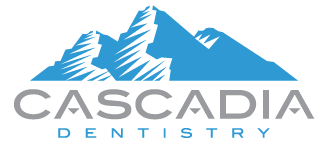 Occasionally, patients will ask for guidance with the use of fluoride as it relates to their dental care. I understand their concerns as there can be some misinformation about its risks. I have talked about the many benefits of fluoride use before and continue to remain a firm advocate of its responsible use based upon the extensive research conducted on this naturally-occurring compound. Per the American Dental Association (ADA): “More than 70 years of scientific research has consistently shown that an optimal level of fluoride in community water is safe and effective in preventing tooth decay by at least 25% in both children and adults. Simply by drinking water, Americans can benefit from fluoride’s cavity protection whether they are at home, work or school. The Centers for Disease Control and Prevention named community water fluoridation one of 10 great public health achievements of the 20th century.” (See https://www.ada.org/en/
Occasionally, patients will ask for guidance with the use of fluoride as it relates to their dental care. I understand their concerns as there can be some misinformation about its risks. I have talked about the many benefits of fluoride use before and continue to remain a firm advocate of its responsible use based upon the extensive research conducted on this naturally-occurring compound. Per the American Dental Association (ADA): “More than 70 years of scientific research has consistently shown that an optimal level of fluoride in community water is safe and effective in preventing tooth decay by at least 25% in both children and adults. Simply by drinking water, Americans can benefit from fluoride’s cavity protection whether they are at home, work or school. The Centers for Disease Control and Prevention named community water fluoridation one of 10 great public health achievements of the 20th century.” (See https://www.ada.org/en/
Alternative Means to Arrest Tooth Decay
 If you’re a nerd about teeth like I am, you may be excited about a new FDA-approved product, silver diamine fluoride, that we recently made available at Cascadia Dentistry. The compound, when applied appropriately, works to arrest existing cavities. Because of its ability to stop decay (after multiple applications), it is a great alternative for treating some types of tooth decay that were previously untreatable or were difficult and sometimes traumatic to treat.
If you’re a nerd about teeth like I am, you may be excited about a new FDA-approved product, silver diamine fluoride, that we recently made available at Cascadia Dentistry. The compound, when applied appropriately, works to arrest existing cavities. Because of its ability to stop decay (after multiple applications), it is a great alternative for treating some types of tooth decay that were previously untreatable or were difficult and sometimes traumatic to treat.
One example of an area where this new compound can be used is on root surfaces below the gum line that were traditionally very difficult to treat. These types of cavities tend to affect patients with dry mouth. Known as root caries, these cavities have been notoriously hard to treat due to their location, the need to visualize complete decay removal and the need to keep the area dry when placing a more traditional filling.
Similarly, in children that struggle with longer dental visits or can’t tolerate anesthetic and/or a dental drill, silver diamine fluoride may be another great alternative to slow or stop tooth decay in primary or “baby” teeth because it is so easy to administer. The procedure is fairly straightforward and simply requires isolating the affected area, placing the material and drying. Standard application is at least two applications spread over at least a week period.
Although we are pleased to announce that we now offer this less invasive approach to treat tooth decay, this is not a silver bullet (no pun intended) for all tooth decay. Because this material stains nearly anything it touches dark brown or black, it is not appropriate for many patients with decay in areas that are visible.
If you are interested in learning more, the following article has more information: more here. Please feel free to reach out and let us know if you have any questions about this or any other procedures that we offer. Call (360) 629-7229 to schedule your next visit today!”.
